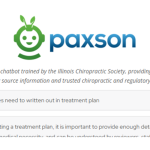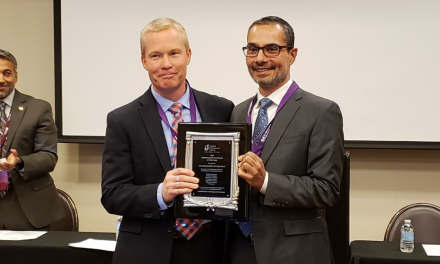
The ICS files comments seeking full coverage under Medicaid rules

The Illinois Chiropractic Society has submitted written comments in response to the recently proposed administrative rules filed by the Illinois Department of Healthcare and Family Services (HFS) regarding the state Medicaid program. Although the law now allows much broader coverage, the proposed rules, published on September 30, 2022, would reinstate only limited Medicaid coverage for adults for just one chiropractic service: “manual manipulation of the spine to correct a subluxation of the spine which has resulted in neuromusculoskeletal condition for which the manipulation is an appropriate treatment”.
Legislation approved in 2021 contains much broader language, allowing for Medicaid reimbursement for a full range of chiropractic treatments. The ICS has been pushing for more expansive rule language that would mirror the statutory provisions. To that end, the ICS has had a series of discussions with HFS top staff in our efforts to spur this necessary change.
The ICS written comments request that the department delete the language that limits reimbursable chiropractic services to only spinal manipulation, and add language that states that Medicaid can reimburse chiropractic physicians for “services performed by a chiropractic physician licensed under the Medical Practice Act of 1987 and acting within the scope of his or her license, including, but not limited to, chiropractic manipulative treatment.” This would provide coverage for all in-scope services (subject to medical necessity and efficacy) rendered by a chiropractic physician. There is a wealth of data and documentation throughout the medical community that supports this potential change.
The limited rule, as proposed by HFS, would effectively prevent Medicaid patients’ easier access to a safe, efficient, and cost-effective treatment for pain. Chiropractic physicians must evaluate and diagnose patients before the physician may perform any procedure, including manipulation. But, since these services are not currently reimbursable by Medicaid, patients are forced to either pay for these services out-of-pocket or seek these services through another medical provider. This is an inconvenience for the patient and may likely be more expensive and add unnecessary costs to the Medicaid program.
According to comments delivered at the Southern Illinois University Rural Health Summit in October, Medicaid is the state’s largest health insurer, covering 25% of the state’s population. Many of these beneficiaries reside in more rural areas that have a shortage of primary health care professionals. The population in these areas tends to be older and more financially distressed. This also happens to be areas where there are practicing chiropractic physicians who are available to treat these patients for their pain relief. Expanded Medicaid coverage for chiropractic services would help resolve this problem.
In discussions with the department, HFS officials have stated that potential increased costs to the Medicaid program is a reason that they have been reticent to promulgate broader rules for chiropractic services. ICS rebuts that claim, as this change would not expand reimbursements or add any new services covered under Medicaid, but would merely allow for other medical providers to provide these same covered services to patients. Allowing payment to chiropractic physicians for therapy does not add new services or CPT codes that are not already covered. Rather, it would increase the number of providers to which beneficiaries would then have access. Patients who choose to see a chiropractic physician first for evaluation and therapy could avoid costly and inconvenient separate visits to seek the initial evaluation and referral from other primary care doctors.
Not only are patient convenience and program costs notable points in these discussions, one cannot ignore the benefits of prescribing natural, nonpharmacologic solutions for the treatment of pain, especially in this time of prescription opioid usage. In the recently released “Clinical Practice Guideline for Prescribing Opioids for Pain” by the Centers for disease Control (CDC), the benefits of using noninvasive nonpharmacologic approaches for pain were highlighted over and over. It clearly declares that these approaches to acute pain have “the potential to improve pain and function without risk for serious harms”; “spinal manipulation as a cornerstone of treatment for acute low back pain”; and “medication treatment, for which benefits are anticipated while patients are taking the medication but are not usually expected to persist after patients stop taking the medication.”
The guideline also addressed the arguments ICS is making to HFS regarding insurance coverage. It states that “Reimbursement often is cited as a principal barrier to why these nonpharmacologic treatments are not more widely used”; and “Health insurers and health systems can improve pain management and reduce medication use and associated risks by increasing reimbursement for and access to noninvasive nonpharmacologic therapies with evidence for effectiveness.”
Procedurally, in the pending process to amend the Medicaid Rules, HFS will review and disclose all public comments it receives regarding the proposed rule change. It will have the discretion whether or not to incorporate suggested changes, and the public will have another opportunity to comment during an upcoming second notice period. Ultimately, the rule proposal will be deliberated by the legislative Joint Committee on Administrative Rules, which will provide input to the Department of Healthcare and Family Services. The ICS will, of course, closely monitor the Department’s response when the agency adopts a final version of the rules.
In the meantime, ICS will continue to push for common sense changes in the Medicaid rules regarding reimbursement for chiropractic physician services.

















